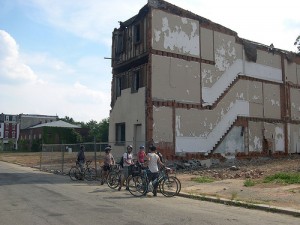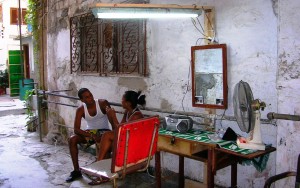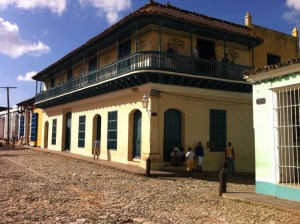 Roberto Críspulo Goizueta (November 18, 1931 – October 18, 1997) was Chairman, Director, and Chief Executive Officer (CEO) of The Coca-Cola Company from August 1980 until his death in October 1997.
Roberto Críspulo Goizueta (November 18, 1931 – October 18, 1997) was Chairman, Director, and Chief Executive Officer (CEO) of The Coca-Cola Company from August 1980 until his death in October 1997.
Under the direction of Goizueta, the Coca-Cola Company became a top US corporation. He is credited with invigorating the company with a global vision.
Roberto Goizueta was born into a prominent family in Havana, Cuba. He was the only son of Críspulo and Aída Goizueta. His grandparents on both sides of his family had emigrated from the Basque Country to Cuba in the late 19th century. His mother’s father, Marcelo Cantera, owned a profitable portion of a local sugar mill. His father, Crispulo, was an architect and a real estate investor who inherited Cantera’s sugar interests.
In Havana, Goizueta attended Colegio de Belén, a Jesuit secondary school and later studied for a year in the United States at the Cheshire Academy, a preparatory school in Connecticut. At Cheshire, Goizueta bettered his English skills by watching American movies.
He began studies at Yale University in 1948, earning a Bachelor’s degree in Chemical Engineering. In 1953, he returned to Cuba to work in his family’s business.
Fidel Castro rose to power in Cuba, transforming the island into a communist state. While on vacation in Miami, Goizueta and his family decided to defect to the United States. At the time of their defection, they had $40 and 100 shares of Coca-Cola stock.
A heavy smoker, Goizueta died of causes related to lung cancer.
Career at the Coca-Cola Company.
A year after returning to Cuba to work in his family’s business, Goizueta found himself working for the Coca-Cola bottler in Cuba after replying to an anonymous want ad in his local newspaper. A short time later, he was promoted to Chief Technical Director of five Cuban bottling plants.
After defecting to the United States, he worked for The Coca-Cola Company in Miami. He was reassigned to Nassau, Bahamas as a Chemist for the Caribbean region.
In 1964, he was moved to the headquarters of the Coca-Cola Company in Atlanta, Georgia. At the age of 35, he became Vice President of Technical Research and Development. He remains the youngest person to hold this position at the company. In 1975, he was promoted to lead the Legal and External Affairs department.
He received a surprising appointment in 1979, to become President of the Coca-Cola Company after then officer J. Lucian Smith (Coca Cola President 1974-1979) resigned. In March 1981, he assumed the chairmanship after Chairman J. Paul Austin (Coca Cola President 1962-1971) retired.
He remained at the helm of The Coca-Cola Company for sixteen years until the time of his death, due to complications from lung cancer, in 1997. During his tenure, the Coca-Cola brand became the best-known trademark in the world. He introduced the Coke slogans “Coke is it!”, “You Can’t Beat the Feeling” and “Always Coca-Cola”. He launched Diet Coke, as well as the ill-fated New Coke.
In 1982, Goizueta approved the purchase of Columbia Pictures, signaling Coca-Cola’s intentions to branch out beyond the soft-drink business. Many analysts believed Coca-Cola had paid too much for the film studio, which, like all entertainment companies, was subject to the unpredictable whims of the movie-going public. Goizueta found himself uncomfortable in a business he knew little about, and in 1989, he sold Columbia to Sony for $3 billion.
He also sat on the Board of Directors for various companies, including SunTrust Banks, the Ford Motor Company, and the Eastman Kodak Company.
Goizueta was famous for his business rivalry with fellow businessman Roger Enrico, CEO of PepsiCo.
Philanthropy.
Roberto Goizueta was a trustee, and many times sat on the board of many educational charitable institutions.
In 1992, he established the Goizueta Foundation, with a goal to support educational and charity institutions. “The purpose of the Goizueta Foundation is to assist organizations that empower individuals and families through educational opportunities to improve the quality of their lives.”
The Goizueta Business School at Emory University.
In 1994, after a $10 million gift from the Robert W. Woodruff Foundation, the Board of Trustees at Emory University in Atlanta, Georgia, named its business school after Roberto Goizueta. The school grants BBAs, MBAs, and PhDs in business. Emory University has an extensive history with Coca-Cola. In 1899, Methodist Bishop Warren Candler’s brother Asa Candler was elected to Emory’s Board of Trustees and was a generous patron of the university. In January 1999, the estate of Goizueta pledged $20 million to Emory University.
Some of his Quotes.
* “The cynics will tell you that the good you do today will be forgotten tomorrow. I say, do it anyway.”
* “Opportunity… ours to seize… ours to live… and ours to defend. Or otherwise—ultimately—ours to lose.”
* “Once you lose everything, what’s the worst that’s going to happen to you? You develop a self-assurance.”
* “We’re going to take risks. What has always been will not necessarily always be forever.”
* “State expectations. Meet expectations. Repeat.” – (on creating credibility.)
* “The moment avoiding failure becomes your motivation, you’re down the path of inactivity. You stumble only if you’re moving.”
* “In order to show proper respect for your future, you must sometimes show some insensitivity to your past.”
“Integrity… it means doing what is right. Not necessarily what is correct—no one is correct all the time. But doing what is right.”
* “Communication is the only task you cannot delegate.”
* “If you take risks, you may fail. But if you do not take risks, you will surely fail. The greatest risk of all is to do nothing.”
Dog breeding.
Goizueta loved dogs. As a young man, he was certified as show judge for the Boxer breed. His champion Pembroke Welsh Corgi showdog, “Fizz,” won “Best of Breed” at Westminster Kennel Club Dog Show in 1996 and 1997.
Agencies/Various/InternetPhotos/YouTube/TheCubanHistory.com
The Cuban History, Hollywood.
Arnoldo Varona, Editor.












